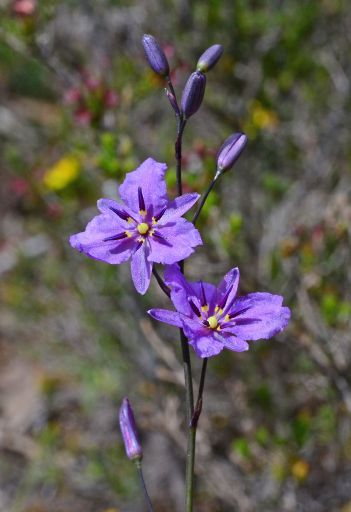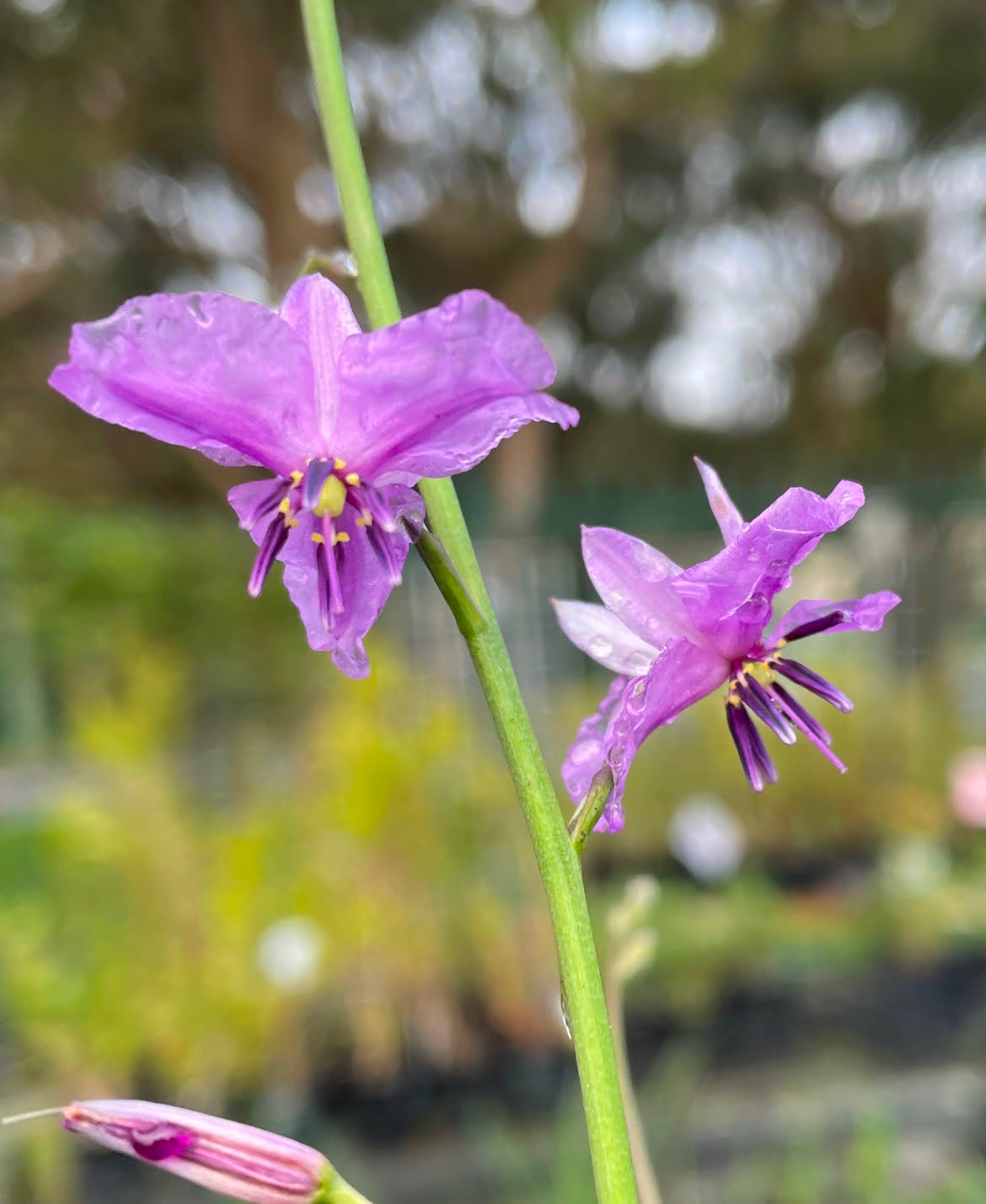
Arthropodium strictum
Common name: Chocolate Lily
I grow best: Tufted perennial herb 1m high
• Attracts birds, native bees and invertebrate creators
• Flowers September – December
• Well drained or sandy soils
• Cultural uses
• Eastern Suburb Banksia Scrub
Looks like: Tufted perennial herb with tubers at the end of roots. Persistent leaf fibres around base of plant. Plants die down to rootstock in summer. Erect branched flowering stem with single fragrant flowers on erect stalks to 35 mm long, petal and sepal lobes spreading. Anthers purple with bright yellow appendages. Plants tufted, to c. 1.2 m high. Roots tuberous, tubers to c. 2 cm long, 3–5 cm from rootstock; base of plant sheathed by persistent leaf fibres. Leaves linear, flat or slightly channeled, 10–60 cm long, 1–10 mm wide. Inflorescence erect, usually branched. Flowers solitary in bract axils, deep pink or mauve, rarely blue, chocolate-scented, pedicels usually erect, to 35 mm long; perianth segments 6–14 mm long, spreading or slightly recurved, petals broader than sepals and with thin, undulate margins; stamens shorter than perianth segments, anthers purple, mostly with bright yellow appendages. Capsule ovoid, c. 4–7 mm long. Seeds c. 2–3 mm long. Chocolate Lily is found in the wild in sandy soil areas with low rainfall.
Habitat & Distribution: This species is found in grassland, woodland and forest regions of New South Wales, South Australia, Queensland, Western Australia, Tasmania and Victoria. Tubers are ready for harvest when the plant is in bloom (September — December), producing blue-violet flowers that smell remarkably of chocolate (sometimes with vanilla or caramel notes). If left unharvested, the plant will go briefly dormant over late Summer and reshoot the following Autumn. Chocolate Lily is found in the wild in sandy soil areas with low rainfall, but for best results at home, use a rich and loamy soil, and water well when the plant reshoots. Grow in full sun or part shade in a garden bed or pot at least 20cm deep, allowing room for the tubers to develop.
Distribution:

Traditional uses: The chocolate scented flowers can be eaten. Its bush food value, however, comes mainly from its juicy tubers, which can be eaten raw or cooked. Raw tubers are slightly sweet and best eaten when young, as they become bitter over time. Like other varieties of tuber vegetables, they’re are delicious just lightly roasted with a bit of salt of butter. The fragrant flowers are also edible, and may be added to salads or used as decorative toppings for cakes, biscuits and tarts.

